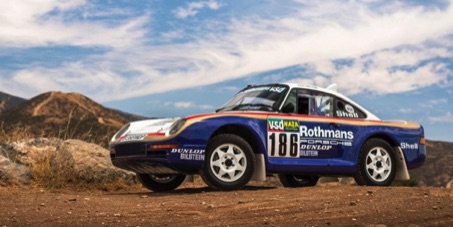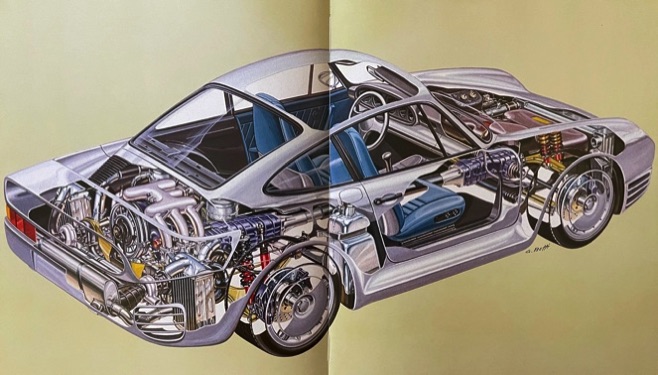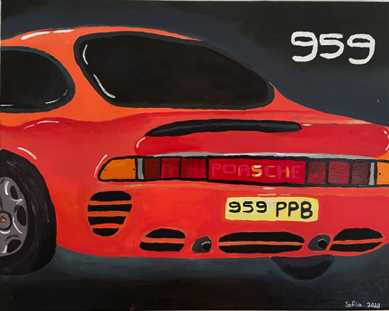Published in the December 2021 issue of “Die Porsche Kassette”
Ⓒ2021 Technolab / PedrosGarage.com

For more information about the Porsche 959 and more, please visit my website:
www PedrosGarage.com.
Happy Porsche'ing,

While recently doing research to produce the Tech Quiz for Suncoast’s 60th Anniversary Celebration I relived some of my fondest Porsche memories as I perused long-closed and stored reference books and manuals.
To this day, I’m still at awe at some of the special vehicles that were produced in an artisanal manner by that small German company we have come to know and love.
But none come close to my fondness of the very special 959.
Let me try to condense some of the data I found:
First shown as a static design study forty years ago, in 1981, it received the designation 959 and became the first member of a new and exclusive category of ‘Supercars’, road legal vehicles with a top speed in excess of 200mph, state of the art design features and price tags to match.
The study was based on the 911 which would be developed into a Gruppe B rally car.
In 1986 three 959 project cars made their debut in the Paris-Dakar rally, which they won (finishing one/two – the third entry, intended as a support vehicle, finished 6th).

More successes followed and a limited production of 250 cars was announced which would be available for sale as road cars to an exclusive and very lucky few. The initial price tag was around US$250,000. (Even by today’s standards, this was an absolute bargain.) The initial price also included a visit to the Nürburgring Circuit for a factory-run familiarization course, because this was no ordinary vehicle.
The engine was a special short-stroke 2.85L flat-6 with titanium rods and crankshaft and air-cooled cylinder barrels but with water-cooled heads. Each head had four valves per cylinder and was operated by double overhead camshafts. Twin KKK turbochargers would boost maximum output to 450bhp at 6500rpm with peak torque of 370lb/ft coming in at 5500rpm.
All this produced a top speed of 205mph at 7500rpm and a 0-60 time of 3.7 seconds.
Two versions of the car were built. The ‘Comfort’ model included A/C and additional sound insulation and the ‘Sport’ version which omitted these, along with the rear seats and other such niceties to provide raw performance.
An all-new four-wheel drive transmission was used with a conventional mid-mounted six-speed gearbox connected to a front transaxle by a large tube housing the driveshaft. The front differential casing also housed a torque-splitting clutch.
A new computer control system, monitored electronic signals generated by sensors which offered engine speed, throttle position and wheel speed. The latter was derived from the same sensors that controlled the ABS. The computer could calculate rate of acceleration and thereby the weight transfer front-to-rear could be mapped. With the rear wheels directly driven, the front axle torque could be varied by the computer to give optimum traction and could be controlled manually by the driver or using one of four pre-programmed modes to assist in varying road conditions offering a variable front/rear split percentage between 40/60 and 20/80 depending on the road conditions. The system had a response time between 50 and 100 milliseconds.

The body was basically that of a 911 Turbo, with galvanized steel components and additional body panels made from Kevlar and other glass-reinforced plastic (GRP) materials. The windscreen was bullet-proof. Braking components came from the 956 racecar and were servo-operated with full anti-lock capability.
The suspension was coil spring/double wishbone design right out of the racecars. Concentric coil springs were used together with twin shock absorbers on each wheel. Each shock absorber had electronically-adjustable variable damping circuitry allowing for computer-control which could vary not only the car’s ride height, but also the angle of the body relative to the road. This further enhanced the ground-effect generated by underbody airflow and added yet more stability to the handling.
Providing adequate cooling became a difficult hurdle which was solved with the now iconic rear wing air scoops which would channel cool air into the very tightly packed engine bay. The car was also shod with magnesium wheels with hollow spokes for a tire-deflation warning system. This was the precursor of the TPMS.
Simply, an outstanding piece of engineering. And it was also quite the eye-candy too!
In a future article, we’ll get to “the rest of the story”. The 959 in America.
I am so fond of it that I now own an orange version of the 959.
It’s a paint-to-sample gifted to me by my very talented granddaughter Sofia for my birthday!


